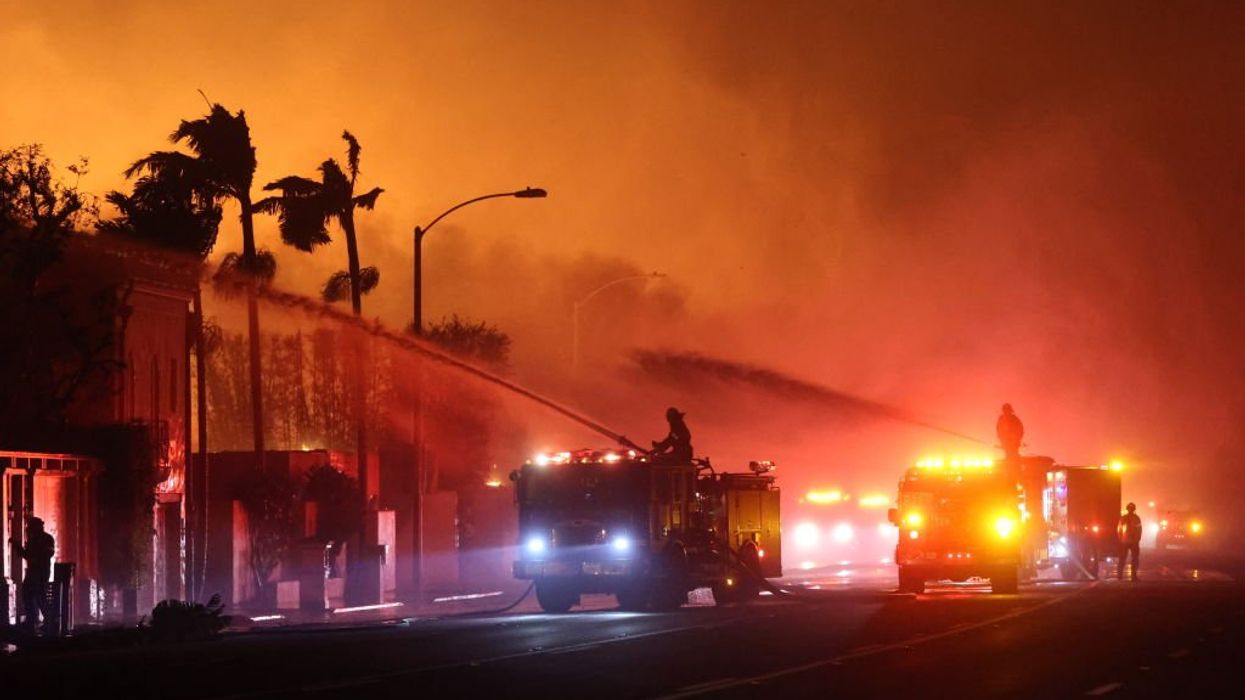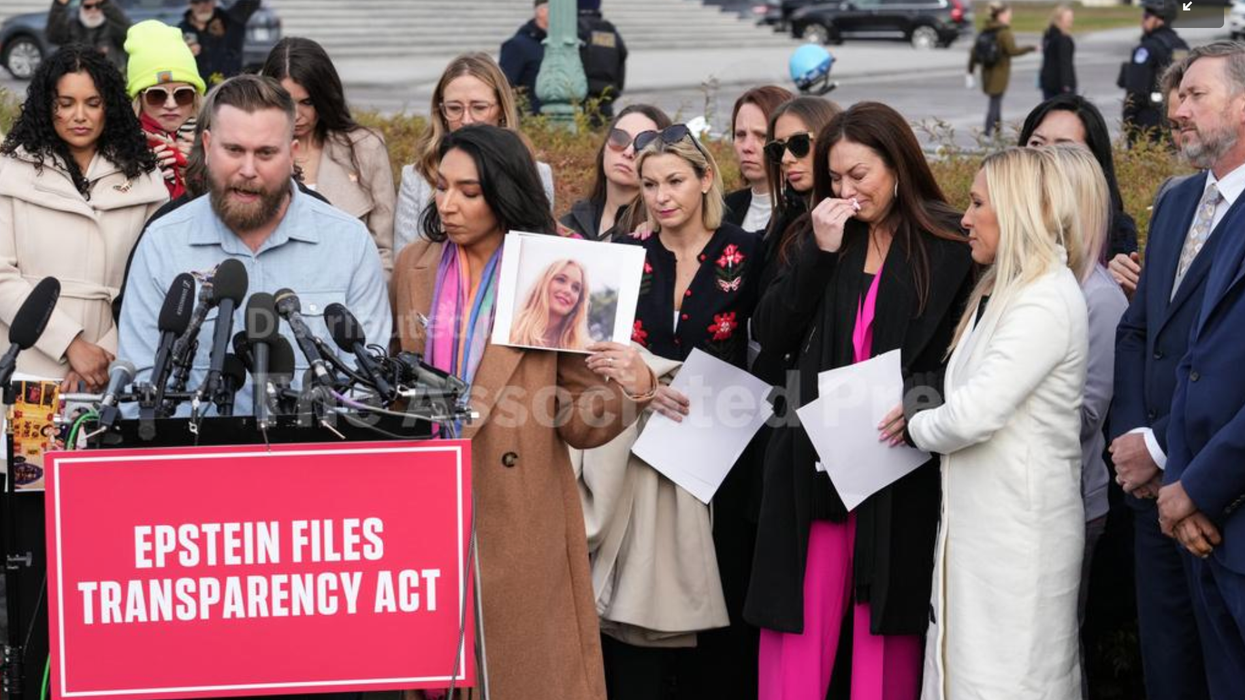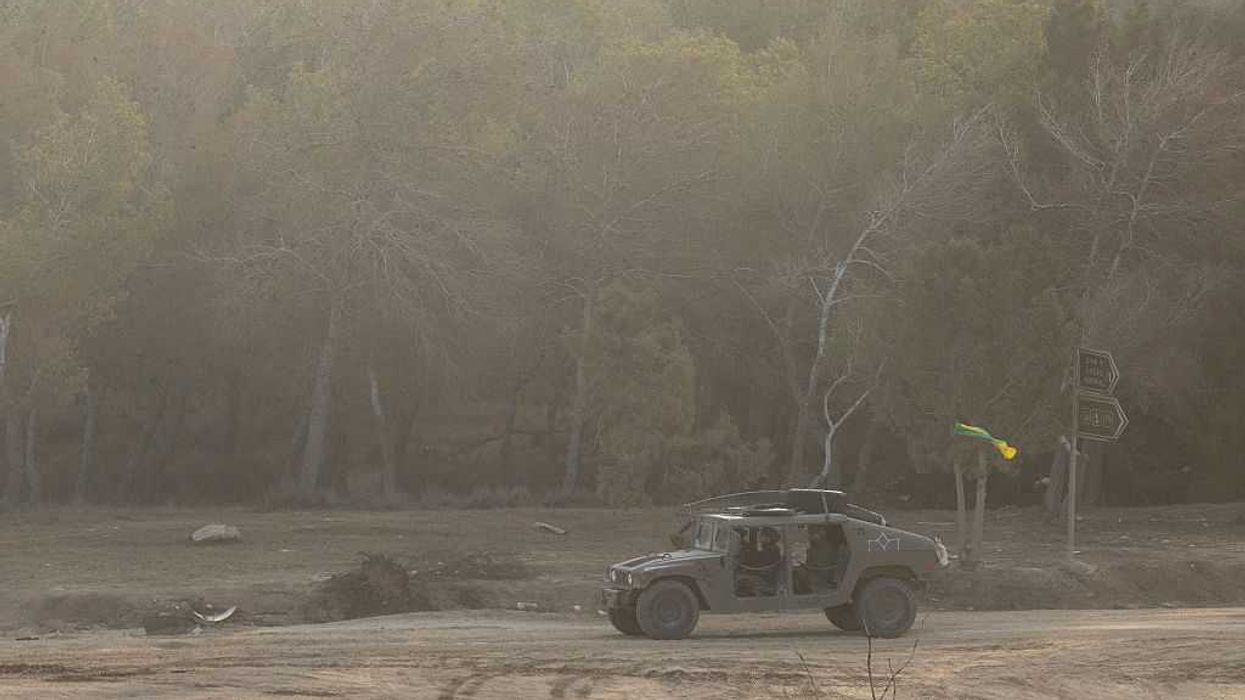An almost unimaginable tragedy is unfolding in Los Angeles, California. On Sunday, the Washington Post reported, "Four active fires in the Los Angeles region have burned over 40,000 acres — an area bigger than San Francisco … with flames claiming more than 12,000 structures and displacing tens of thousands.” Twelve people have lost their lives because of the fires.
Donald Trump’s response has been stunning, though not surprising. Instead of steadiness and solidarity, he has offered falsehoods, fictions, and blame. As in other things, he has departed from democratic traditions to which other Republicans have committed themselves.
Last week, even Florida’s Republican Governor Ron DeSantis, who has in the past used California and its Democratic Governor, Gavin Newsom, as political foils, demonstrated respect for that tradition. On January 8, he said: “Our prayers are with everyone affected by the horrific fires in Southern California. When disaster strikes, we must come together to help our fellow Americans in any way we can.”
That same day, the president-elect responded in a very different way. He posted on Truth Social that “Governor Gavin Newscum refused to sign the water restoration declaration put before him that would have allowed millions of gallons of water…to flow daily into… “areas that are currently burning in a virtually apocalyptic way.”
Using a demeaning nickname for California’s chief executive would have been bad enough. But to make matters worse, Trump’s reference to a “water restoration declaration” was pure fiction.
As Newsom’s Office pointed out, “There is no such document as the water restoration declaration.” Independent news sources agreed.
An ABC News station in California suggested that Trump might have been confused. It speculated that he may have been referring to a 2020 memorandum he signed aimed at “directing more water from northern California to central and southern California, which never took effect.” And even if it had, it “would not have made a meaningful impact on the water supply in the Los Angeles area.”
But from the start, Trump was not content just to spread misinformation. His January 8 post pointed the finger of blame at Newsom. As he put it, “He wanted to protect an essentially worthless fish called a smelt by giving it less water (it didn’t work!), but didn’t care about the people of California…He is the (sic) blame for this.”
Lest anyone missed the point, one day later, Trump called on Newsom to “resign” and repeated this is all his fault!!!” On Thursday, he called Newsom an “INCOMPETENT GOVERNOR.
Comedy Central’s Desi Lydic, among others, called out Trump, labeling him “one of the country’s leading blame producers.” She also tried to correct the record while taking a swipe a la Trump himself: “(T)he LA fires,” she noted, “have nothing to do with smelt. But in Trump’s defense… words are hard, and smelt only has one syllable, while climate change has three.”
Democracy is damaged when politics becomes a blame game, and presidential leadership in a democracy is always important, but never more so than when the nation confronts catastrophe. In such times, unity, not division, is the order of the day.
Presidents should rise above partisanship to provide it. Presidents of both parties have done just that, even if their efforts have sometimes misfired.
In fact, previous Republican presidents have set a high standard for what leaders should do and how presidents should talk to the nation when disaster strikes.
For example, recall President George W. Bush's words after Hurricane Katrina hit New Orleans. In a televised address on September 16, 2005, Bush called on the nation to come together and made clear that his and his party’s “first commitment” was “to meet the immediate needs of those who had to flee their homes and leave all their possessions behind.”
“In the life of this nation,” he explained, “we have often been reminded that nature is an awesome force and that all life is fragile….Every time, the people of this land have come back from fire, flood, and storm to build anew …These trials …remind us… that we're tied together in this life, in this nation.”
At no time did Bush, whose own handling of the disaster was roundly panned, try to score political points. He refused to defect criticism or blame New Orleans’ Democratic Mayor Ray Nagin or Louisiana’s Democratic Governor Kathleen Blanco.
Instead, he did what democratic leadership demanded and promised to “listen to good ideas from Congress and state and local officials and the private sector…(and to) work with members of both parties.”
Bush followed the example set by his father in the aftermath of a devastating earthquake that struck San Francisco in 1989. It “damaged an estimated 18,300 houses… Another 963 were destroyed. The shaking also damaged nearly 2,600 businesses and wiped out 147. Tremors caused a portion of the upper deck of the Bay Bridge to collapse…. Forty-two people were killed.”
Even though San Francisco’s progressive Democratic Mayor Art Agnos had r eferred to a quick visit by Vice President Dan Quayle as a ”publicity stunt,” President George H. W. Bush did not fire back or criticize the Mayor.
In fact, he said, “I want the citizens of the San Francisco Bay area and its neighbors first to know that our hearts are with them as they face this terrible tragedy. And words can't adequately convey our sentiments… but I can say that we will take every step and make every effort to help the Bay Area in its hour of need.”
The president visited the city to be seen and photographed with the Mayor and other Democratic officials and praised the city and state of California for “pulling together." Bush committed the federal government to do all that was “necessary” to help a city that, thirty-five years later, President-elect Trump would dump on during the 2024 campaign.
In 2018, recalling what Bush did, Agnos called him a "true statesman" and a “president who cared about the entire country, and he showed it in the… (1989) earthquake.”
Finally, among modern presidents, Ronald Raegan set a high bar for how to behave during and speak about disasters big and small.
In 1982 when, as the Washington Post notes, “Northern Indiana's worst flooding in nearly 70 years had washed away crops, inundated houses and businesses and left more than 7,000 people homeless….” Raegan did not hesitate to show that he cared.
He went there and “clad in white shirt, crisp black suit and low-cut, rubber boots borrowed from a farmer…(stood) in a line of people to help pass sandbags up to the river's edge.” He quickly promised disaster aid.
Four years later, in the wake of the Challenger space shuttle explosion, Raegan did not blame NASA for the disaster. Instead, he quickly expressed his “great faith in and respect for our space program” and reassured them that “what happened today does nothing to diminish it.”
Raegan concluded his remarks by uttering truly memorable words about the astronauts who lost their lives: “We will never forget them, nor the last time we saw them, this morning, as they prepared for their journey and waved goodbye and ‘slipped the surly bonds of earth’ to ‘touch the face of God.’''
In our time, the most memorable thing about Trump’s response to the Los Angeles fires will be his eagerness, as he returns to the White House, to resume the role of “the Blamer in Chief.” Blaming may sometimes be necessary, but, in a democracy, people of all political faiths should do less blaming and more working together.Austin Sarat is the William Nelson Cromwell professor of jurisprudence and political science at Amherst College.



















